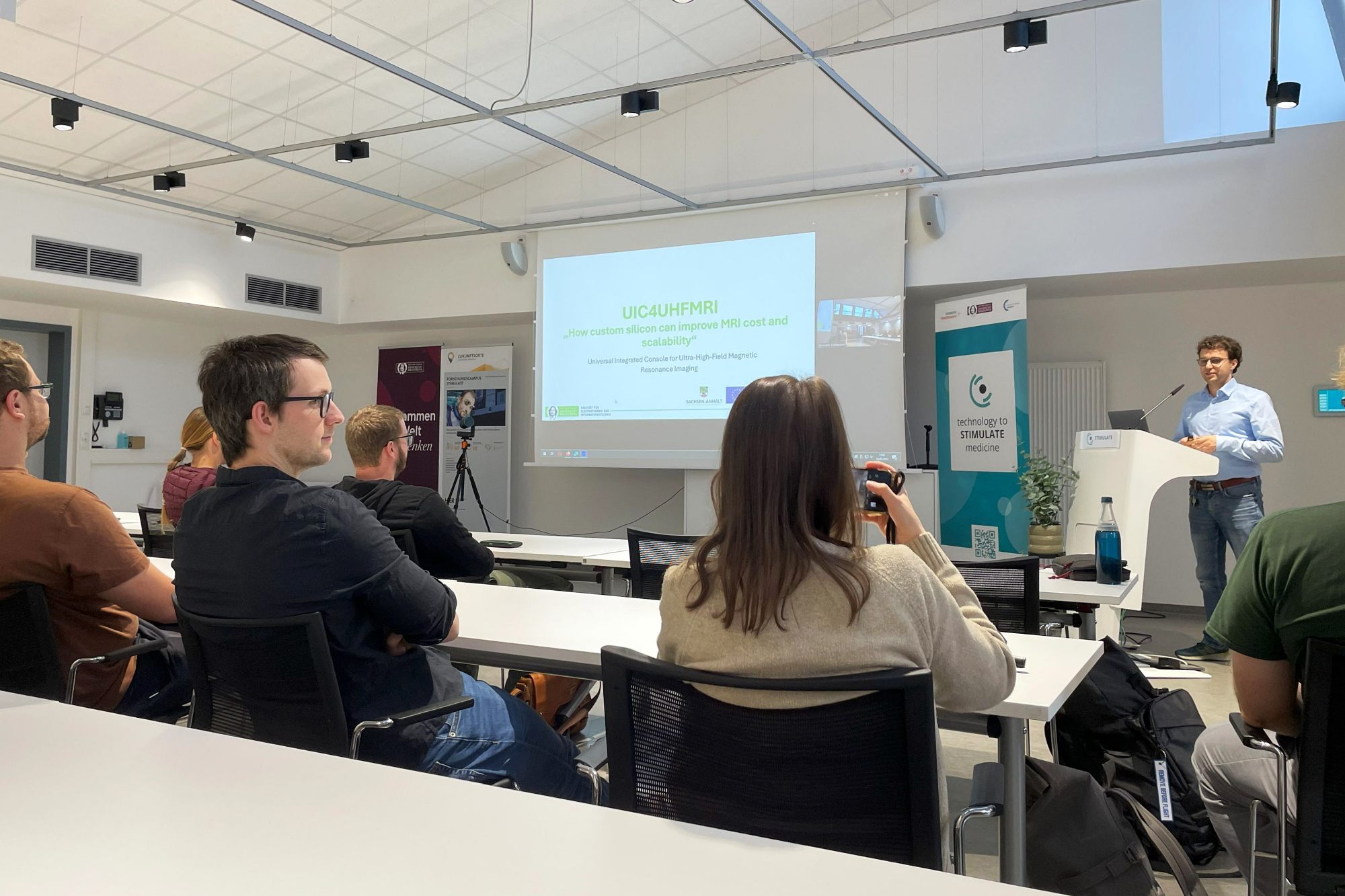NEWS
Christof Pfannenmüller presented innovative electronics platform for ultra-high-field MRI
On 18 September 2025, an exciting lecture was given by Mr Christof Pfannenmüller (Chair of Integrated Electronic Systems, Otto von Guericke University Magdeburg) as part of the STIMULATE Colloquium. Under the title ‘Universal Integrated Console for Ultra-High-Field Magnetic Resonance Imaging: How custom silicon can improve MRI cost and scalability,’ Mr Pfannenmüller presented the pioneering UIC4UHFMRI project.
The aim of the project is to develop a universal, integrated console for ultra-high-field magnetic resonance imaging (MRI) scanners. The focus is on combining modern semiconductor technologies with MRI electronics in order to bundle complex functionalities through higher frequencies and customised chips. This integration makes it possible to significantly simplify the system architecture – a significant step towards more cost-efficient, scalable MRI systems. The approach is reminiscent of recent developments in communication technology: what has been achieved there through standardisation and miniaturisation could now also become a reality in medical imaging.
We would like to thank Mr Pfannenmüller for his inspiring presentation and look forward to the further development of the UIC4UHFMRI project – a promising contribution to innovation in the field of image-based medicine.
Christof Pfannenmüller präsentierte innovative Elektronikplattform für Ultra-Hochfeld-MRT
Am 18. September 2025 fand im Rahmen des STIMULATE Kolloquiums ein spannender Vortrag von Herr Christof Pfannenmüller (Lehrstuhl für Integrierte Elektronische Systeme, Otto-von-Guericke-Universität Magdeburg) statt. Unter dem Titel „Universal Integrated Console for Ultra-High-Field Magnetic Resonance Imaging: How custom silicon can improve MRI cost and scalability“ stellte Herr Pfannenmüller das zukunftsweisende Projekt UIC4UHFMRI vor.
Ziel des Projekts ist die Entwicklung einer universellen, integrierten Konsole für Ultra-Hochfeld-Magnetresonanztomographen (MRT). Im Zentrum steht die Verbindung moderner Halbleitertechnologien mit MRT-Elektronik, um durch höhere Frequenzen und maßgeschneiderte Chips komplexe Funktionalitäten zu bündeln. Diese Integration erlaubt es, die Systemarchitektur wesentlich zu vereinfachen – ein bedeutender Schritt hin zu kosteneffizienteren, skalierbaren MRT-Systemen. Der Ansatz erinnert an jüngste Entwicklungen in der Kommunikationstechnologie: Was dort durch Standardisierung und Miniaturisierung gelang, könnte nun auch in der medizinischen Bildgebung Realität werden.
Wir danken Herrn Pfannenmüller für den inspirierenden Vortrag und freuen uns auf die weitere Entwicklung des Projekts UIC4UHFMRI – einem vielversprechenden Beitrag zur Innovation im Bereich bildgestützter Medizin.
